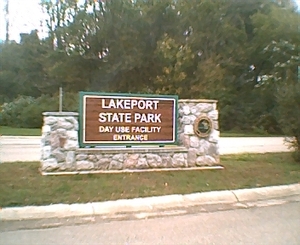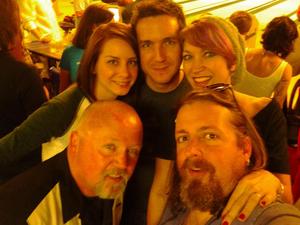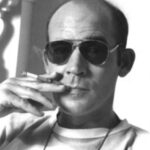In the 1998 movie whose title includes his surname, old stoner Jeff Lebowski reveals that he was there at the beginning of what would become American Sixties counterculture.
“I was one of the authors of the Port Huron Statement,” he says. “The original Port Huron Statement, not the compromised second draft.”
That places him, in the second week of June 1962, at what’s now Lakeport State Park — walking distance from where I’m writing this — among a gathering of proto-hippies whose manifesto, revised in those five days, provided a framework for 1960s student activism.
“We are people of this generation, bred in at least modest comfort, housed now in universities, looking uncomfortably to the world we inherit,” begins the Statement, whose final draft was largely counterculture icon Tom Hayden’s work.
Born in 1939, Hayden grew up in modest comfort, in Detroit, and suburban Royal Oak. He attended the University of Michigan and, with fellow student Alan Haber — “Ann Arbor’s resident radical” — became the faces of a new activist association, the Students For A Democratic Society.
The labor camp Hayden mentions in the introduction to the 2005 edition of his memoir, “The Port Huron Statement: The Visionary Call of the 1960s Revolution,” was a campground in Lakeport, thirteen miles north of Port Huron, owned by the United Auto Workers for use by its members, and rented to outsiders by the week or weekend.
There, among the trees and trails and beaches that June week, at the first official convention of the SDS, the Port Huron Statement was polished and made ready for publication.
The Statement’s authors cited “the permeating and victimizing fact of human degradation, symbolized by the Southern struggle against racial bigotry,” and the Cold War of words between free and communist nations that could turn nuclear at any time, as the two ongoing conditions that moved them from silence to activism.
In the months before the Lakeport gathering, the most visible representations of the group’s fears were the Freedom Riders and the Berlin Wall.
The concept of separate but equal accommodation, for white and non-white, Americans, law since 1896, had been ruled unconstitutional eight years earlier. In southern states, remnants of legal segregation lingered long after that. The Freedom Riders set out to test a 1960 Supreme Court ruling that prohibited segregated seating on public transportation engaged in interstate commerce; specifically, buses whose routes crossed state lines. Through the summer of 1961, in Georgia, Alabama and Mississippi, Greyhound buses were stopped and vandalized. Freedom Riders were attacked by vigilantes and then arrested, charged with disturbing the peace.
That August 13, the East German government began construction of a barrier separating communist East Berlin from the city’s free western sectors. The Cold War, like a dispute between schoolboys, had been largely talk and bluff with an occasional push. Now, a concrete wall topped with barbed wire, that couldn’t be ignored, prevented Easterners from reaching West Berlin and then freedom through the Iron Curtain. Allied and Russian tanks faced off at CheckpointCharlie, war became a possibility, and both sides had nuclear weapons.
Berlin and Freedom Rides reached my universe via radio and newspapers that summer, when I was eight. World events were still light years away from where I was. For the college students who drafted the Port Huron Statement, they were everyday, ominous, reality.
The spirit of change was also in the air, as another young, newly-elected, charismatic president — forty-two year old JohnF. Kennedy — promised in his inaugural address solutions to “the unsolved problems of peace and war, unconquered problems of ignorance and prejudice, unanswered questions of poverty and surplus.”
There was no doubt, in his mind or those of the Lakeport visionaries, that everything they wanted would someday be achieved.
Decades can’t be defined by the calendar. The Sixties, say some historians, began when JFK died in 1963, and ended in August 1974 withWatergate. Others push the end back, to Kent State (May 4, 1970) or Altamont (December 6, 1969), and the start back to JFK’s January 1961 inauguration.
A case can also be made for the June 1962 Lakeport gathering as the birth of the Sixties. The times were defined by student activism; civil rights marches, and antiwar protests, and activism began to take real shape and form in the pages of the Port Huron Statement.
Others, in organized groups and loose confederations, had already roughed in the concepts that would become the heart of Sixties counterculture. Ban The Bomb protests had become common in a post-nuclear world. The Southern Christian Leadership Conference promoted racial equality, the Mattachine Society sexual equality. Entertainers from Pete Seeger to Malvina Reynolds to Mahalia Jackson spoke and sang of a peaceful world free of prejudice. No one, before Lakeport, had compiled everyone’s visions into a single document that could become a platform for future activist groups.
The argument can be made that society since the idealistic Sixties has regressed to levels as sexist and racist as those the Lakeport gathering despised. Maybe more so. Activism remains alive, its entry point now on web sites and message boards. Read the text, read the posts; you’ll find that the goals — freedom, peace, equality, justice — all form a thread that leads back to the Port Huron Statement..
The old UAW camp is now Lakeport State Park’s day-use area. It has trails, picnic pavilions, and a wide, clean beach, and is an ideal site for a group outing or family picnic. I’ve walked all the trails, explored where there aren’t any, and in all seasons searched the beach for lake-washed glass. What a place for a daydream. All it needs is a marker designating the grounds an official Sixties Counterculture Historic Site.
To get there, take Interstate 69 to the M-25 Lexington exit. Stay on 25 — its name changes from Pine Grove Avenue to 24th Avenue to Lakeshore Road — for seven and one half miles. Turn at the sign, and go back fifty years, to a time when change was the unspoken mantra, when the Port Huron Statement’s creators were sure it would guide them on their journey to a peaceful, equitable world.






